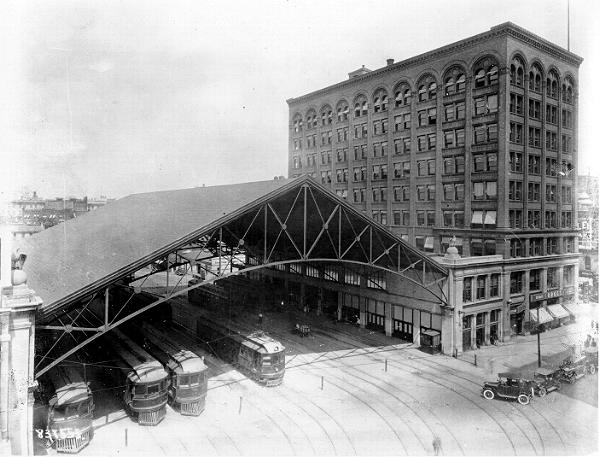Ft. Harrison Interurban station |
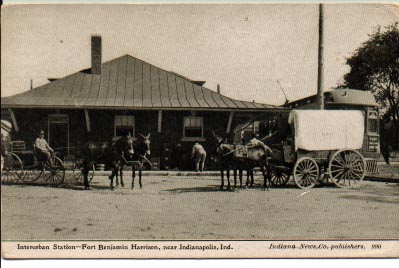
|
|
This building is still in use. It was used by the
U.S. Army as the Post Office until Ft. Harrison was closed as a military base. It is still used as a private business building. |
Fairmount, In.
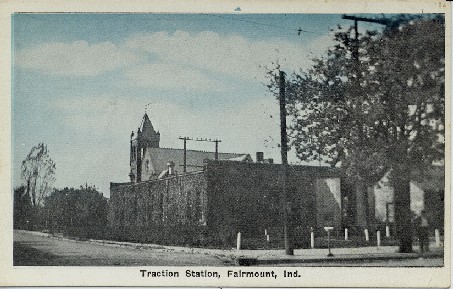 (Hometown of legendary screen actor, James Dean)
(Hometown of legendary screen actor, James Dean)
SHOPS:
|
Anderson Shops
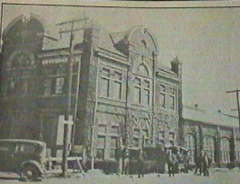 Located on what was originally Meridian Ave., then Baldwin Ave., and now Broadway......some of the original building is still standing. The old UTC of I logo still adorns the north and west side of the office portion of the building. The remainder of the Power House, which stood immediately north of the Shops, was destroyed by fire a few years ago.
Located on what was originally Meridian Ave., then Baldwin Ave., and now Broadway......some of the original building is still standing. The old UTC of I logo still adorns the north and west side of the office portion of the building. The remainder of the Power House, which stood immediately north of the Shops, was destroyed by fire a few years ago.
Anderson Shops?
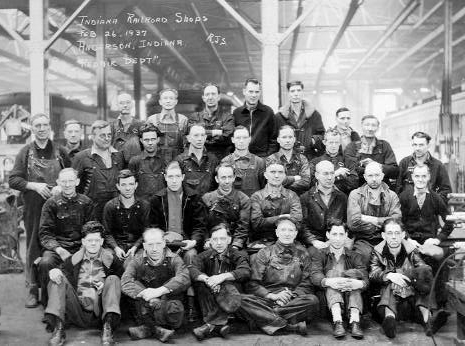
UTC of I logo
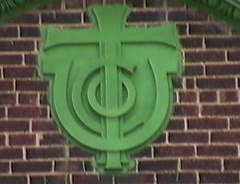 photo taken 6-4-2000
photo taken 6-4-2000
(JJGrant collection)
Shop Building today
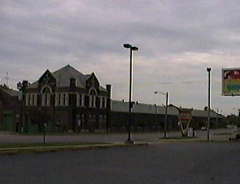 photo taken 6-4-2000
photo taken 6-4-2000
JJGrant collection
Old Power House
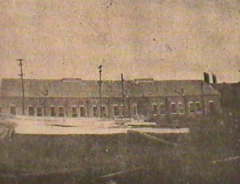 The original power house, was located at the south end of the shops on Baldwin (Broadway) Ave.
The original power house, was located at the south end of the shops on Baldwin (Broadway) Ave.
The "new" Powerhouse
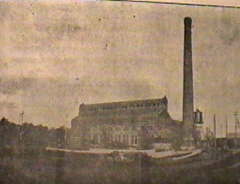 This building was located at the north end of the shops. The front portion of this building was torn down years ago. The remainder (rear portion), which in later years housed a bowling alley, burned a few years ago.
This building was located at the north end of the shops. The front portion of this building was torn down years ago. The remainder (rear portion), which in later years housed a bowling alley, burned a few years ago.
IUTCo (UTC of I) power house

This is the last surviving bldg. of the "new powerhouse" just north of the Shop.
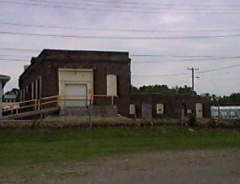 This photo taken 6-4-2000 from the former location of the ladder tracks for the shop.
This photo taken 6-4-2000 from the former location of the ladder tracks for the shop.
(JJGrant collection)
|
|
Indianapolis
Daleville, In.
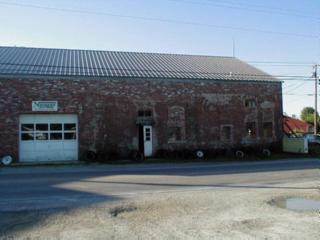 Shop/substation/station as it looks today.
Shop/substation/station as it looks today.
(photo by Roger Hensley)
WAY & STRUCTURES
In typical trolley style, tracks were run thru the streets of towns and cities, the route usually leading by the county courthouse via the main street. This situated the carriers ideally with respect to the commerce of the individual Hoosier towns, but later worked to a disadvantage by slowing schedules, imposing burdensome paving and accident liability costs. In a few cases...Indianapolis, Ingalls, Pendleton, Muncie, Summitville, Orestes....relocations were made to improve running time or to remove a particularly sharp curve or other hazard. At the outset track was ballasted with gravel, but in later years cinders from company power houses were utilized. Rail was mostly 70 lb. per yard. Various types of ties were tried, even some concrete covered ones in an experimental installation on the Middletown branch. Another use of concrete, as a collar around the butts of poles, came to be a familiar sight on Union Traction and in many places will probably remain for years as a reminder of bygone days. The most notable structure was the long steel trestle over Deer Creek, just south of Marion on the line to Anderson. This was said to be the longest and highest interurban bridge in Indiana. There was a graceful concrete arch skew bridge over the Pennsylvania RR north of New Castle on the line to Muncie. Many of the original bridges were of the through truss type. In 1913 the general area was subjected to serious floods which washed out many Union Traction bridges. Replacements were made with a standard design of deck-girder bridge, using reinforced concrete abutments and piers replacing or adding to th earlier limestone foundations. Station facilities ran the usual gamut of interurban practice, from the pretentious four-track train shed at Muncie, the substantial brick buildings at Elwood and Kokomo, down to small frame buildings as at Eaton and Fortville and store space at Marion. In many cases the station building served also as living quarters for the agent and his family, besides having its ticket office, waiting room, freight, baggage and express facilities, and sometimes a whirring rotary converter substation. To complete the picture, there would often be a spur track at right angle to the main in the street, connected by a sharp radius curve. This spur would permit unloading of freight directly to teamsters wagons or to the freight house floor. Generally there was enough track on this spur to allow a passenger car to squeeze in with a freight trailer, to give an extra meeting point or to provide storage space for an occasional special move. At strategic locations the station track layout was supplemented by a wye or loop.......practically all Union Traction rolling stock was single end. |
Logansport bridge over Wabash River
White River Bridge
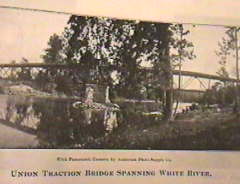 Bridge over White River at the end of Main Street, Anderson, IN (Sorry for the poor quality)
Bridge over White River at the end of Main Street, Anderson, IN (Sorry for the poor quality)
|
|
| |
|
|
||
| previous page |
|
next page |
|
|
||
